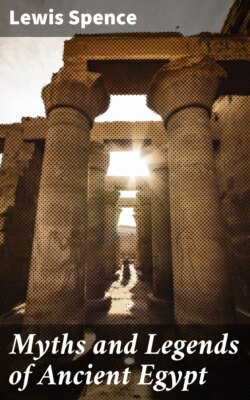Читать книгу Myths and Legends of Ancient Egypt - Lewis Spence - Страница 39
На сайте Литреса книга снята с продажи.
The College of Thebes
ОглавлениеEarly Greek travellers in Egypt, and especially Herodotus and Strabo, speak with enthusiasm of the abilities of the Egyptian priests and the high standard of philosophic thought to which they had attained. The great college of priests at Thebes is alluded to with admiration by Strabo. Its members were probably the most learned and acute theologians and philosophers in ancient Egypt. Colleges of almost equal importance existed elsewhere, as at Anu, the On or Heliopolis of the Greeks. Each nome or province had its own great temple, which developed the provincial religion regardless of faiths which existed but a few miles away. The god of the nome was its divinity par excellence, Ruler of the Gods, Creator of the Universe, and giver of all good things to his folk.
But it must not be imagined that, if the priesthood as a body was wealthy, some of its members did not suffer the pinch of hardship. Thus, although the best conditions attached to office in the great temples, these were by no means overstaffed. At Abydos only five priests composed the staff, while Siut had ten attached to it. Again, the smaller temples possessed revenues by no means in proportion to their size. A study of this subject shows the stipend of the chief priests of the smaller shrines. "On the western border of the Fayûm," says Erman, "on the lake of Moeris, was the temple of Sobk[2] of the Island, Soknopaios as it is called by the Greeks. It had a high-priest who received a small stipend of 344 drachmæ, and all the other priests together received daily about one bushel of wheat as remuneration for their trouble. They were not even immune from the statutory labour on the embankments, and if this was lessened for them, it was owing to the good offices of their fellow-citizens. The revenues of the temple, both in regular incomes and what was given in offerings, was used for the requirements of the ceremonies, for at every festival fine linen must be provided for the clothing of the three statues of the gods, and each time that cost 100 drachmæ; 20 drachmæ were paid on each occasion for the unguents and oil of myrrh employed in anointing the statues, 500 drachmæ were for incense, while 40 drachmæ were required to supply sacrifices and incense for the birthdays of the emperor. And yet these priests, who were in the position of the peasantry and of the lower classes of townspeople, maintained that their position in no way diminished their ancient sanctity."
Priestesses also held offices in the temples. In earlier times these officiated at the shrines of both gods and goddesses, and it is only at a later date that we find them less often as celebrants in the temples dedicated to male deities, where they acted chiefly as musicians.
